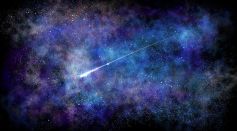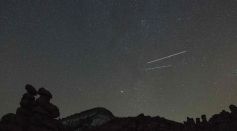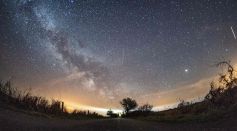Tags: Halley's Comet

Halley's Comet This Week: Famous Possible 'Star of Bethlehem' Snowball To Reach Farthest Point From Sun

Halley's Comet Brings Orionid Meteor Shower This Weekend: Here's How To Watch This Stargazing Marvel

Orionid Meteor Shower Peak and More: Here's What To Look Expect in the Night Sky This Week

Orionid Meteor Shower Begins To Light Up the Sky as Halley's Comet Nears Solar System Return

Eta Aquarid Meteor Shower May 2023: How, When, and Where Can You Watch It?

From Full Flower Moon to Shooting Stars From Halley's Comet: Here's What You Should Add to Your Sky Watchlist This Week

Eta Aquariids Meteor Shower: Watch Meteoroid Light Up the Sky as Shooting Stars With Venus, Mars, Jupiter and Saturn

Eta Aquariids Meteor Shower 2022: How to See Debris from Halley’s Comet Through the Sky This Week
When, Where Is The Best Time And Location For Orionids Meteor Shower Best Viewing Experience?

Eta Aquarids May 2021: Meteor Shower to Illuminate the Sky With Shooting Stars
Meteor Shower Rains Bits of Halley’s Comet Down on Earth
Most Popular

Largest Known Volcanic Aquifer Discovered Beneath Oregon's Cascades

New 'Supergiant' Sea Bug Found in South China Sea, Named After Darth Vader

Mediterranean Sea Was Refilled by a Catastrophic Flood Millions of Years Ago

Mysterious Cosmic Waves That Sound Like Birds Detected in Unexpected Space Region





